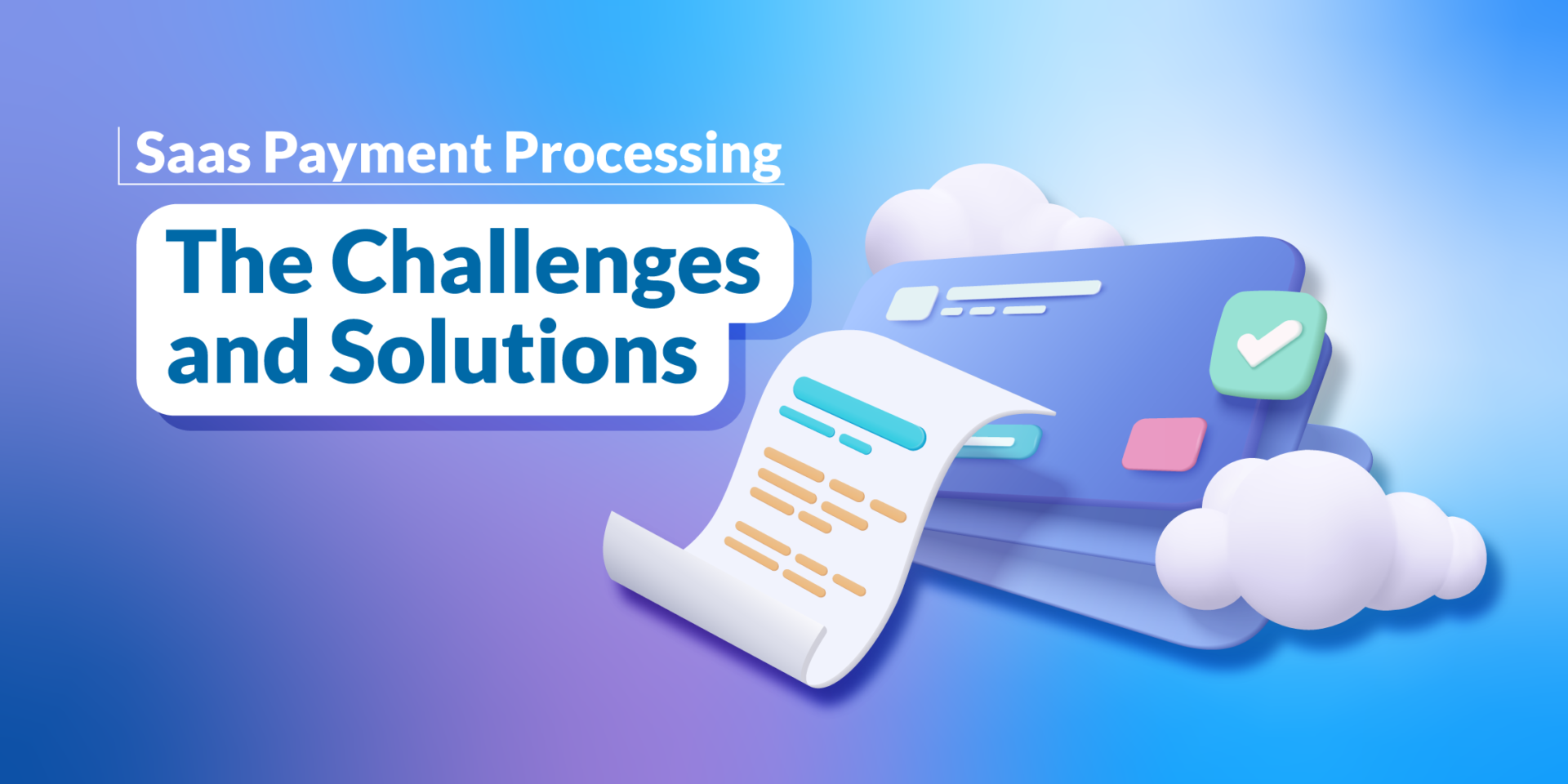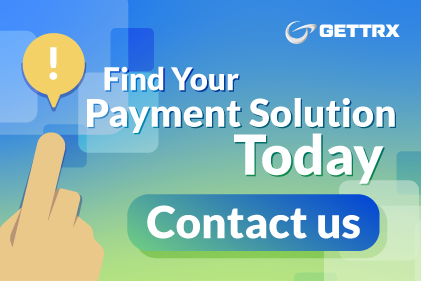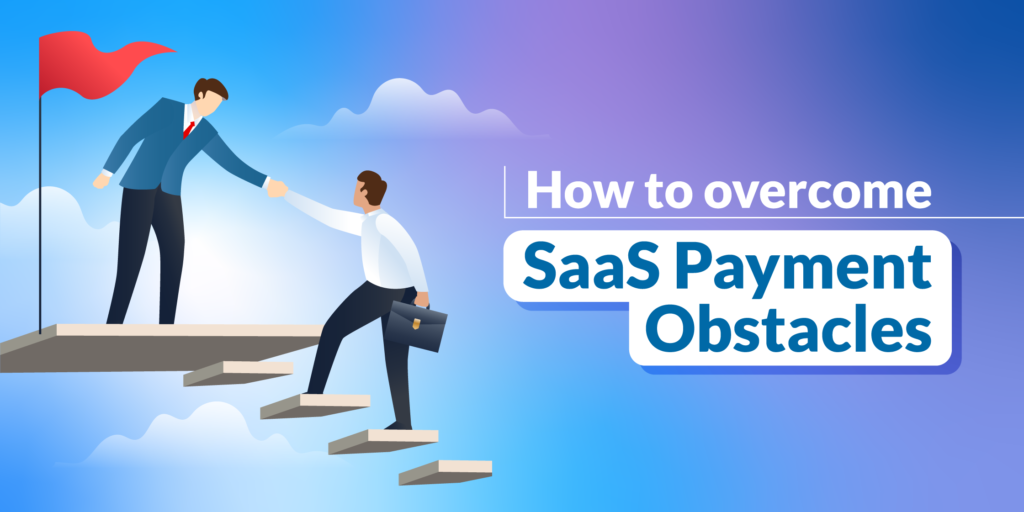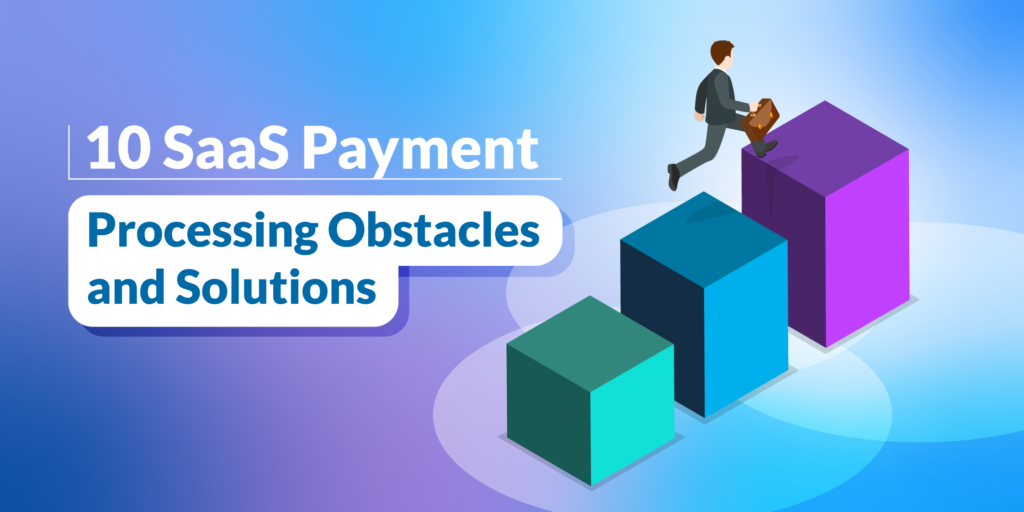Beyond the traditional modes of digital transactions, Software as a Service (SaaS) introduces unique complexities in payment processing.
The nature of SaaS models demands more than just the transactional handling of payments.
The beauty of SaaS lies in its agility and scalability. However, these qualities pose distinct challenges in managing financial transactions, from invoicing to security.
Most SaaS providers encounter various issues beyond mere payment acceptance, data security, and seamless user experiences.
But what if there was a way to navigate these obstacles effectively, transforming challenges into opportunities for growth and customer satisfaction? This is not just wishful thinking; practical solutions exist to tackle these hurdles.
This article covers the landscape of SaaS payment processing, detailing the challenges and presenting solutions that can help SaaS companies thrive.
We’ll explore almost everything from invoicing complexities to cross-border transactions and provide actionable solutions to these challenges.
Table of Contents
SaaS Payment Processing At A Glance
Payment processing for SaaS involves several critical elements to ensure smooth and secure transactions.
Subscription Management: This includes setting up and managing various subscription plans, handling upgrades or downgrades, and managing cancellations.
Automated Billing: Automating the billing process for recurring payments, ensuring timely and accurate charges based on the subscription model.
Payment Security: Implementing robust security measures like encryption and compliance with standards such as PCI DSS to protect sensitive customer data.
Payment Gateways: Integrating with payment gateways to facilitate transaction processing, including authorization, capture, and settlement of payments.
Customer Communication: Sending automated notifications for subscription renewals, payment confirmations, and reminders for upcoming payments or card expiries.
Error Handling and Recovery: Managing failed transactions, such as declined cards or insufficient funds, and implementing strategies to recover these payments.
Financial Reconciliation: Reconciling payments received with bank statements and managing accounting records.
Analytics and Reporting: Providing analytics on payment transactions, subscription metrics, churn rates, and other key performance indicators to inform business strategies.
Global and Multi-currency Support: Handling payments across different countries and currencies, considering local payment methods and currency conversion.
Customer Support: Offering support for payment-related queries and issues, enhancing customer satisfaction and retention.
What Is SaaS Payment Processing?
SaaS payment processing is a specialized approach to handling financial transactions for businesses that operate on a Software as a Service (SaaS) model.
This model is where customers pay a set subscription fee to access Software hosted online. SaaS payment processing is integral in managing these recurring payments.
Unlike traditional one-time sales, SaaS payment processing involves regular, ongoing transactions. This requires a system capable of handling recurring billing, updating subscription details, and managing customer data securely.
It’s not just about processing a payment; it’s about maintaining a steady, reliable revenue stream through efficient and user-friendly means.
A key aspect of SaaS payment processing is its focus on customer experience.
Since SaaS businesses rely on long-term customer relationships, the payment process must be smooth and hassle-free. This includes easy subscription management, straightforward payment methods, and robust security measures to protect customer data.
In essence, SaaS payment processing is the backbone of the financial operations in a SaaS business model, ensuring seamless, secure, and efficient handling of recurring payments, thereby fostering customer trust and satisfaction.
How Does SaaS Payment Processing Work?
SaaS payment processing works through a series of steps designed to handle the unique demands of subscription-based services.
Here’s a breakdown of how it typically functions:
1. Customer Subscription
The process begins when a customer subscribes to a SaaS product. They enter their payment details, which are securely stored for future transactions.
2. Recurring Billing
Unlike one-time purchases, SaaS models involve recurring payments. The payment processor automatically charges the customer’s card or account based on the agreed subscription plan – monthly, annually, or any other frequency.
3. Payment Gateway Integration
SaaS platforms use payment gateways, which are digital portals that facilitate the processing of transactions. These gateways securely transmit payment information from the customer to the payment processor or acquiring bank.
4. Secure Data Handling
Security is paramount in payment processing. SaaS payment systems encrypt sensitive data, like credit card numbers, to ensure transaction security.
5. Invoice Generation and Management
After each payment, the system generates an invoice sent to the customer. This process also includes handling any changes in subscription plans or updating payment information.
6. Handling Failed Transactions
If a transaction fails (due to expired cards, insufficient funds, etc.), the system typically tries to reprocess the payment within a specified timeframe and notifies the customer of any issues.
7. Reporting And Analytics
SaaS payment processing systems often include analytics and reporting tools. These tools help businesses track payments, understand revenue patterns, and identify areas for improvement.
8. Compliance And Regulations
Lastly, SaaS payment processing adheres to various financial regulations and standards, like PCI DSS, to ensure compliance and protect against fraud.
In summary, SaaS payment processing is a comprehensive system that not only processes payments but also manages the entirety of the customer’s billing lifecycle, ensuring security, compliance, and a smooth customer experience.
10 SaaS Payment Processing Obstacles
The obstacles involved in SaaS payment processing are as follows:
1. Invoicing And Billing
One of the foremost challenges in payment processing for SaaS is managing efficient and accurate invoicing and billing. This process is more complex in the SaaS realm due to the recurring nature of transactions and the variety of subscription plans offered.
Invoicing and billing issues typically arise from the need to handle diverse billing cycles, varying pricing models, and the inclusion of add-ons or usage-based billing.
For instance, a customer might upgrade their plan mid-cycle, necessitating proration and adjustment in billing.
Ensuring invoices are detailed, clear, and compliant with different tax jurisdictions adds complexity.
How To Overcome:
- Automated Billing Systems: Implement automated systems that can handle different billing models and dynamically adjust invoices based on usage or changes in subscription plans.
- Customizable Invoicing Templates: Use invoicing software that allows customization to meet the specific needs of different customer segments.
- Real-Time Billing Updates: Ensure that any changes in service or pricing are immediately reflected in the billing system to maintain accuracy.
- Clear Communication: Keep customers informed about any changes in pricing in their billing cycles and provide detailed breakdowns of charges to maintain transparency.
- Integration with Accounting Software: Connect your billing system with accounting software to streamline financial reporting and reconciliation.
2. Payment Reconciliation
Payment reconciliation in SaaS payment processing is a complex task, primarily due to SaaS transactions’ recurring and variable nature.
The challenge lies in accurately matching incoming payments with their corresponding invoices, considering the frequent changes in subscription plans and amounts.
With numerous transactions occurring regularly, the process becomes more intricate. Discrepancies can arise due to failed payments, refunds, chargebacks, or human error.
These issues can lead to unbalanced accounts, misreported revenues, and customer dissatisfaction if not addressed promptly and accurately.
The challenge is further compounded when dealing with multiple payment gateways and financial institutions, each with their own reporting formats and timelines.
How To Overcome:
- Automated Reconciliation Systems: Implement advanced Software that automates the reconciliation process. This system should be capable of integrating data from various payment gateways and matching it with internal records and bank statements.
- Comprehensive Data Integration: Ensure your reconciliation tools can handle data from all payment channels, including credit cards, bank transfers, and digital wallets. This integration helps in consolidating transaction data for accurate reconciliation.
- Scheduled Reconciliation Processes: Establish regular intervals (daily, weekly, monthly) for reconciliation to keep track of transactions and quickly identify discrepancies.
- Error Identification Algorithms: Utilize Software with sophisticated algorithms that can detect and flag inconsistencies between transaction records and bank statements, facilitating quick resolution.
- Customizable Reporting Features: Choose reconciliation software that offers customizable reporting options. This feature allows businesses to generate specific reports that align with their unique needs and audit requirements.
- Training and Support: Provide comprehensive training to staff responsible for reconciliation. Regular training updates as new features or challenges emerge can keep the team well-equipped.
- Cross-Checking Mechanisms: Implement manual cross-checking protocols, especially for large or unusual transactions, to add a layer of verification.
3. Security
Ensuring the security of payment data involves protecting against external threats and managing internal vulnerabilities, such as employee access to sensitive data.
Another aspect is the need to comply with stringent industry standards like PCI DSS, which sets the requirements for the secure handling of credit card information.
Failing to meet these standards can lead to severe penalties and loss of customer trust.
How To Overcome:
- Robust Encryption Techniques: Implement strong encryption for all data transmissions. This includes using protocols like SSL/TLS for secure data transfer over the internet.
- Regular Security Audits: Conduct frequent and comprehensive security audits to identify vulnerabilities in your payment processing system.
- Compliance with Standards: Ensure adherence to international security standards like PCI DSS (Payment Card Industry Data Security Standard). Regular updates to compliance protocols are essential as standards evolve.
- Advanced Fraud Detection Systems: Utilize sophisticated fraud detection and prevention tools. These systems should be capable of real-time monitoring and alerting for suspicious activities.
- Two-Factor Authentication (2FA): Implement 2FA for accessing payment processing systems to add a layer of security.
- Employee Training and Awareness: Regularly train staff in best practices for data security and update them on the latest cyber threats and prevention techniques.
- Secure Payment Gateways: Choose payment gateways that are known for their strong security measures and have a proven track record in handling SaaS payment processing securely.
- Regular Software Updates and Patches: Keep all Software, including payment processing systems, regularly updated with the latest security patches.
4. Revenue Analytics
Regarding revenue analytics in payment processing for SaaS, the primary obstacle lies in accurately interpreting and leveraging the vast amount of data generated through recurring transactions.
SaaS businesses need to track metrics like Monthly Recurring Revenue (MRR), Customer Lifetime Value (CLV), churn rate, and more.
The challenge intensifies with integrating data from various sources, such as payment processors, CRM systems, and accounting software.
Ensuring this data is accurate but also meaningful and actionable is a significant hurdle.
Additionally, the dynamic nature of SaaS businesses, with frequent plan changes, upgrades, downgrades, and customer turnover, makes it difficult to maintain a consistent understanding of revenue trends.
Analyzing and predicting revenue becomes complex, impacting strategic decision-making and long-term planning.
How To Overcome:
- Comprehensive Analytics Tools: Implement analytics tools specifically designed for SaaS businesses. These should offer insights into key metrics like Monthly Recurring Revenue (MRR), Customer Lifetime Value (CLV), and churn rates.
- Real-Time Data Access: Ensure the analytics system provides real-time data access, enabling prompt decision-making based on current trends.
- Customizable Dashboard: Use a dashboard that can be customized to display relevant metrics, helping stakeholders quickly understand the business’s financial health.
- Integration with Billing Systems: Integrate analytics tools with billing and customer management systems to accurately track revenue streams and customer behaviors.
- Data-Driven Forecasting: Utilize forecasting models to predict future trends based on historical data, assisting in strategic planning.
- Training and User Education: Train staff members, especially those in sales and finance, on effectively interpreting and using analytics data.
5. Collecting Electronic Payments Across Borders
The challenge in collecting electronic payments across borders for SaaS businesses is multifaceted. Firstly, there’s the issue of dealing with different currencies and exchange rates, which can fluctuate and affect pricing and revenue.
Then there’s the matter of diverse payment methods. Customers in different countries often have preferred local payment options, and not accommodating these can lead to lost sales.
Additionally, navigating the varied regulatory landscapes of different countries adds another layer of complexity, particularly when it comes to compliance, tax laws, and reporting requirements.
All these factors combine to make cross-border payment collection a complex task, requiring a sophisticated and flexible approach to accommodate the diverse needs of a global customer base.
How To Overcome:
- Multi-Currency Support: Implement a payment system that supports multiple currencies, allowing customers to pay in their local currency.
- Local Payment Options: Integrate local payment methods to cater to customers’ preferences in different regions.
- Understanding Global Compliance: Stay informed about and comply with international financial regulations and tax laws, possibly with the help of legal and financial experts.
- Dynamic Currency Conversion: Offer dynamic currency conversion at the point of sale, allowing customers to view and pay in their home currency.
- Transparent Pricing: Communicate any additional fees associated with cross-border transactions to maintain transparency and trust.
- Partner with Global Payment Processors: Collaborate with payment processors with a global presence and expertise in efficiently handling international transactions.
6. Encryption and Secure Payments
Cyber threats are constantly evolving, meaning that security measures must evolve too. Keeping up with the latest encryption standards and cybersecurity practices is essential but resource-intensive.
Moreover, maintaining a balance between stringent security and user convenience is tricky. Overly complex security measures can hamper the user experience, potentially deterring customers.
How To Overcome:
- Implement Robust Encryption: Use advanced encryption methods to protect data during transmission and storage.
- PCI DSS Compliance: Adhere strictly to the Payment Card Industry Data Security Standard (PCI DSS) guidelines to ensure security.
- Regular Security Audits: Conduct regular security audits and vulnerability assessments to identify and address potential security gaps.
- Use Reputable Payment Gateways: Partner with payment gateways known for their strong security measures.
- Educate Customers: Inform customers about secure payment practices, enhancing their trust and cooperation in maintaining security.
7. User Experience
Users expect quick, straightforward transactions, and any complexity or delay can lead to frustration and potential loss of business.
Another aspect is integrating the payment process within the overall SaaS platform. It must feel seamless and part of the unified service rather than a disjointed or cumbersome addition.
Achieving this level of integration while maintaining security and efficiency is a delicate balance.
How To Overcome:
- Simplify the Payment Process: Streamline the payment process to reduce the steps required to complete a transaction.
- Responsive Design: Ensure the payment interface is user-friendly and responsive across all devices.
- Provide Multiple Payment Options: Offer a variety of payment methods to cater to different customer preferences.
- Transparent Communication: Clearly communicate all payment-related information, including pricing, subscription terms, and additional fees.
- Regular User Feedback: Collect and analyze customer feedback to improve the payment experience continuously.’
8. Failed Transaction Management
Here’s where things get a bit thorny. Every failed transaction is like a hiccup in the smooth flow of your business’s revenue stream.
The obstacle? Identifying and resolving these failures efficiently.
When a customer’s payment doesn’t go through, it’s not just a missed sale; it’s a potential loss of trust and a test of your system’s resilience.
The reasons can range from expired credit cards to network issues, and each case needs a swift, tactful response.
Figuring out the ‘why’ and ‘how’ to fix it quickly without causing customer frustration – that’s the real challenge in managing failed transactions.
How To Overcome:
- Automated Alerts for Expiring Cards: Implement systems that notify customers in advance about expiring cards.
- Smart Retry Logic: Use algorithms to intelligently retry failed transactions at optimal times.
- Direct Customer Communication: Reach out to customers directly to resolve payment issues.
- Flexible Payment Options: Offer alternative payment methods or grace periods for customers facing temporary financial issues.
- Real-Time Analytics and Monitoring: Monitor transaction failures in real-time to quickly address and resolve issues.
9. Involuntary Churn
Involuntary churn, where customers unintentionally end their subscriptions due to payment failures or other issues, is a significant challenge in SaaS.
This impacts revenue and customer lifetime value, as lost customers may be difficult to reacquire.
How To Overcome:
- Enhanced Customer Communication: Keep open lines of communication, especially around billing issues, to allow customers to resolve any problems.
- Flexible Billing Options: Offer different billing plans and options to accommodate varying customer needs and financial situations.
- Proactive Account Management: Monitor customer accounts for signs of potential churn and proactively engage with at-risk customers.
- Efficient Payment Error Resolution: Quickly address and resolve payment errors to prevent involuntary churn.
- Loyalty and Retention Programs: Implement loyalty programs or retention strategies to encourage customers to stay.
10. Integrations
SaaS platforms need to integrate with multiple third-party services like CRM systems, accounting software, and payment gateways.
Each of these integrations must be seamless, ensuring data flows smoothly between systems without loss or error. However, dealing with different APIs, data formats, and compatibility issues can make this daunting.
Achieving a cohesive ecosystem where all parts communicate effectively is crucial but often easier said than done.
How To Overcome:
- Choose Flexible Payment Platforms: Opt for a payment platform that offers easy integration with a wide range of SaaS tools.
- API-First Approach: Utilize APIs that allow for seamless integration and data exchange between different systems.
- Invest in Middleware Solutions: Consider middleware solutions that act as a bridge between different software systems, facilitating integration.
- Regular System Updates and Maintenance: Keep all systems up-to-date and regularly check for any integration issues.
- Collaboration with Integration Experts: Work with experts who specialize in software integrations to ensure smooth implementation.
Wrapping Up
Overall, having a reliable and efficient payment processing partner is essential. Our new GETTRX SaaS solution exemplifies such a solution.
Designed to meet the unique needs of SaaS businesses, it offers streamlined billing, robust security, and user-friendly interfaces, making it an ideal choice for those looking to overcome the hurdles of SaaS payment processing.
As we embrace the future, it’s clear that the success of SaaS businesses will be largely influenced by their ability to manage payment processing effectively.
Frequently Asked Questions
What is SaaS payment processing?
SaaS payment processing is the method of managing recurring financial transactions for subscription-based software services.
How do SaaS companies collect payments?
SaaS companies collect payments primarily through automated billing systems integrated with payment gateways for recurring subscriptions.
What is the best payment solution for SaaS?
The best payment solution for SaaS is one that offers robust security, flexible billing options, and seamless user experience, like the new Gettrx SaaS product.
Is a payment gateway a SaaS?
Yes, a payment gateway can be a SaaS, providing online services for processing electronic payment transactions.








